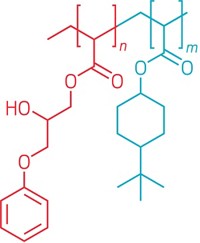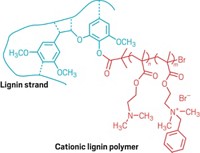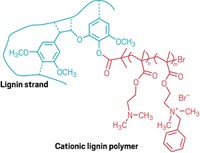Advertisement
Grab your lab coat. Let's get started
Welcome!
Welcome!
Create an account below to get 6 C&EN articles per month, receive newsletters and more - all free.
It seems this is your first time logging in online. Please enter the following information to continue.
As an ACS member you automatically get access to this site. All we need is few more details to create your reading experience.
Not you? Sign in with a different account.
Not you? Sign in with a different account.
ERROR 1
ERROR 1
ERROR 2
ERROR 2
ERROR 2
ERROR 2
ERROR 2
Password and Confirm password must match.
If you have an ACS member number, please enter it here so we can link this account to your membership. (optional)
ERROR 2
ACS values your privacy. By submitting your information, you are gaining access to C&EN and subscribing to our weekly newsletter. We use the information you provide to make your reading experience better, and we will never sell your data to third party members.
Materials
Polymers Hold Bacteria At Bay
Materials Science: Screening method uncovers new class of coatings that resist biofilm formation
by Lauren K. Wolf
August 20, 2012
| A version of this story appeared in
Volume 90, Issue 34

A high-throughput microarray technique has pinpointed a new class of bacteria-resistant polymers (Nat. Biotechnol., DOI: 10.1038/nbt.2316). The research team at MIT and the U.K.’s University of Nottingham that made the discovery hopes the new materials will help prevent bacterial contamination of medical devices.
Although hospitals use biocidal coatings on many medical devices, about 80% of patient infections are caused by aggregates of bacteria, called biofilms, on that equipment. The newfound polymers have the potential not only to improve patient health but also to reduce the cost of treating hospital-acquired infections, says Andrew L. Hook, coauthor of the study and a postdoc at Nottingham.
The team has filed a patent for the new polymers, Hook says, and is now talking with medical device manufacturers.
To discover the polymers, the Nottingham-MIT researchers built upon polymer microarray technology previously developed in Robert S. Langer’s lab at MIT. The team, led by Nottingham’s Morgan R. Alexander, Martyn C. Davies, and Paul Williams, mixed and printed a library of acrylate monomers in 300-µm-diameter spots on a microscope slide. They then photopolymerized the slide to yield more than 570 unique polymer spots. Finally, the researchers incubated the slides for three days with different bacteria—strains of Pseudomonas aeruginosa,Staphylococcus aureus, and Escherichia coli engineered to produce green fluorescent protein.
The modified bacteria enabled the team to assess its materials in a high-throughput way with a standard lab fluorescence scanner, Hook explains. The intensity readout from the array spots correlates with the number of bacteria that stick to each polymer coating.
On the basis of their array results, the researchers chose top-performing “hit” monomers for further testing. When coated onto silicone catheters, polymerized, and incubated with bacteria, the lead candidates reduced bacterial film formation by as much as 97% compared with a commercial silver-based coating commonly used on medical devices. The researchers also implanted their polymer-coated catheters into mice for four days and saw decreased bacterial film formation compared with uncoated catheters.
The materials that scientists are currently pursuing as bacteria-resistant coatings are generally hydrophilic or zwitterionic, Hook says. But the class of polymers the Nottingham-MIT team hit upon doesn’t fall into either of those categories: The new polymers are weakly amphiphilic, containing both cyclic hydrocarbon (hydrophobic) and ester (hydrophilic) groups. “The microarray format allowed us to cast our net wide,” Hook says. “We searched a number of materials people wouldn’t usually look at.”
“This technology will change the way surface coatings are discovered,” says Shaoyi Jiang, a chemical engineer at the University of Washington, Seattle, whose group studies bacteria-resistant materials.





Join the conversation
Contact the reporter
Submit a Letter to the Editor for publication
Engage with us on Twitter